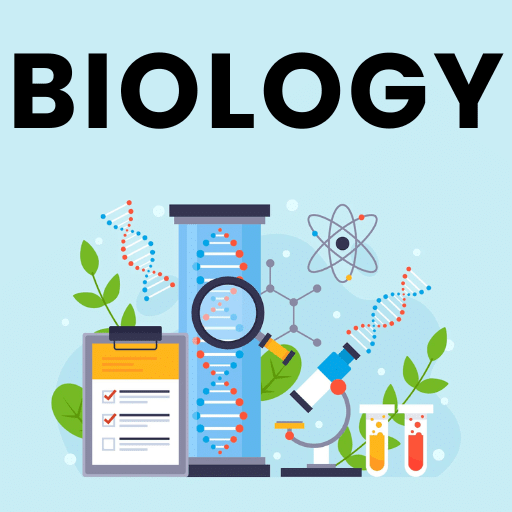Explanation: Expression - The Frog and the Nightingale | Literature Reader (Communicative English) Class 10 PDF Download
1. Croaked away in Bingle Bog......... (line 2)
Explanation ...
Bog is a wet and marshy land. The poet has deliberately used ‘Bingle’ for alliteration.
2. He croaked awn and awn and awn......... (line 4)
Explanation ...
It means ‘on and on’. These words are phonetically selected and also rhyme with dawn.
3. And the crass cacophony......... (line 7)
Explanation ...
‘Crass’ means meaningless and cacophony is a very loud and unpleasant noise. Here it is used to refer to the unpleasant voice of the frog.
4. To display his heart’s elation......... (line 14)
Explanation ...
Elation means happiness. In this context, it means that the frog sang to express the happiness of his heart.
5. Stared toward the sumac, rapt......... (line 21)
Explanation ...
Sumac is a tree with cane-shaped fruits. When the nightingale sat on a sumac tree and sang her melodious song, all the creatures of the bog were mesmerised and were curious to know who the singer was.
6. For my splendid baritone......... (line 44)
Explanation ...
The frog gets a complex after hearing the nightingale and the praise she has got. But he is very boastful and calls his unpleasant voice as ‘baritone’, which is good for male singers.
7. The technique was fine of course.
But it lacked a certain force......... (line 50)
Explanation ...
The frog is jealous so he gives a negative complement in a very tactful manner. He cannot find any fault, so admits that the ‘technique’ is flawless but the song is not full of passion.
8. I don’t think the song’s divine
But -oh-well-at least it’s mine......... (lines 55-56)
Explanation ...
The nightingale is trying to be very modest since the creatures of the bog had already declared her song to be ‘too divine’. She is overawed by a great critic like frog, so she says in a timid manner that she is proud of the originality of her song. Ironically, she is chastised in the end for not being original.
9. Breathed: “This is a fairy tale -
And you’re Mozart in disguise” (lines 64-65)
Explanation ...
The nightingale cannot believe her luck, since dreams only materialise in fairytales. Moreover, she is too impressed and overawed by the frog’s offer to train her. So she compares him to the famous German musician Mozart.
10. Flushed with confidence, and fired
with both art and adoration (lines 70-71)
Explanation ...
The nightingale is greatly inspired. She has already received praise and appreciation from the creatures of the bog, so she is full of confidence and is ready to create ripples in the world of art.
11. Journeyed up and down the scale ......... (line 84)
Explanation ...
The frog persuades the nightingale to sing in rainy weather, which is not suitable to her. He makes her practise at various pitch-levels, tries many musical notes, and as a result the nightingale is too tired.
12. Owl of Sandwich, Duck of Kent........
Mallard and Milady Trent
Martin Cardinal Mephisto
And the Coot of Monte Cristo......... (lines 90-94)
Explanation ...
The poet wishes to create humour so this refers to the titled crowd, which are authentic royal titles. Earl of Sandwich, Duke of Kent My lord and Milady of Trent Martin and Cardinal from Mephisto Count of Monte Cristo.
13. “We must aim for better billings
You still owe me sixty shillings”......... (line 109-110)
Explanation ...
The frog’s greed is insatiable. He coaxes the nightingale to sing more passionately, so that more creatures come to hear her and he can mint more money. Moreover, he exploits her further by charging her for giving music training.
14. And, my dear, “lay on more trills,
Audiences enjoy such frills.........” (lines 105-106)
Explanation ...
The frog wants to tire the nightingale, so he asks her to sing very fast-paced musical notes, repetitively, which will prove to be very exhausting. He gives the logic that the audience prefer very fast, sensational embellishments in a song.
15. Night on night her tired song
Zipped and trilled and bounced along......... (lines 113-114)
Explanation ...
The nightingale is thoroughly exhausted; her voice has lost its freshness and magic. The melody of her voice has been replaced by musical notes that are repetitive but not pleasant to hear. The songs just appear to drag on. So the creatures of the bog lose interest.
16. “Use your wits and follow fashion
Puff your lungs out with passion”........ (lines 125-126)
Explanation ...
This piece of advice from the frog proves to be the nightingale’s undoing. She tries to perform as instructed by the callous frog and tries to infuse more energy and force in her song. Unfortunately, this results in bursting a vein and the nightingale succumbs to her death under pressure.
17. But she was a stupid creature - .....
Far too prone to influence......... (lines 132-134)
Explanation ...
These lines reveal how malicious and hard-hearted the frog is. He starts criticising the nightingale the moment she dies. Instead of a worthy tribute, he calls her stupid, vulnerable and too nervous. Basically he wants to be rid of any blame that may be heaped on him, for her death. He is right in calling the nightingale ‘too prone to influence’ because it was her vulnerability that led to her death.
18. “That your song must be your own that’s why I sing with panache”
Explanation ...
Nightingale was proud of her originality and the frog had earlier also criticised her that it was not enough reason to boast about. He continues in his conceited manner, telling everyone that no one could imitate his confident and elegant style.
|
5 videos|107 docs|3 tests
|
FAQs on Explanation: Expression - The Frog and the Nightingale - Literature Reader (Communicative English) Class 10
| 1. What is the central theme of "The Frog and the Nightingale"? |  |
| 2. How does the frog manipulate the nightingale in the poem? |  |
| 3. What lessons can be learned from the nightingale's experience in the poem? |  |
| 4. What role does nature play in "The Frog and the Nightingale"? |  |
| 5. How does the poem reflect human behavior and social dynamics? |  |






















